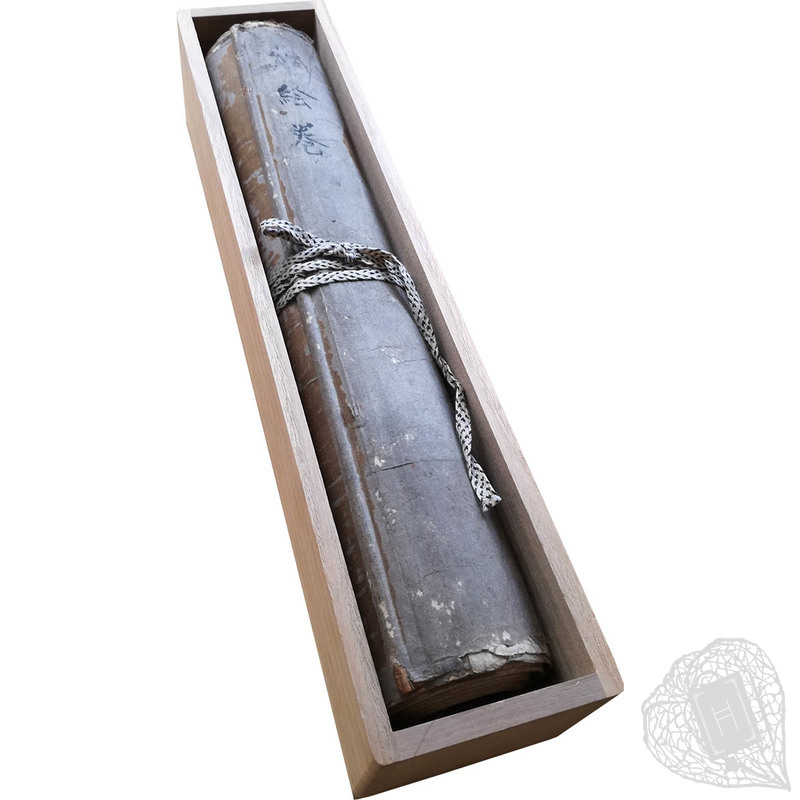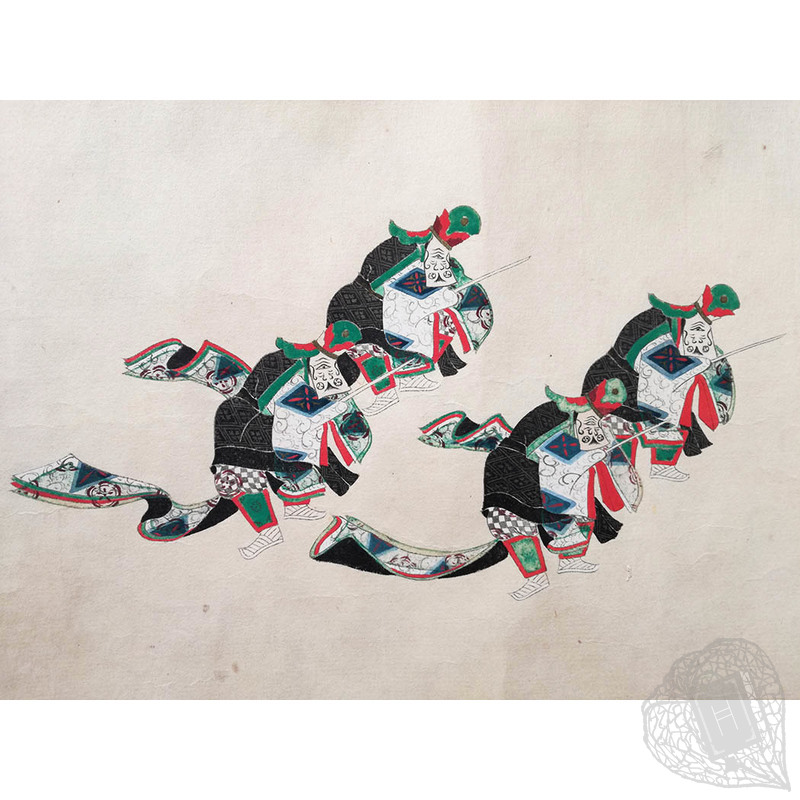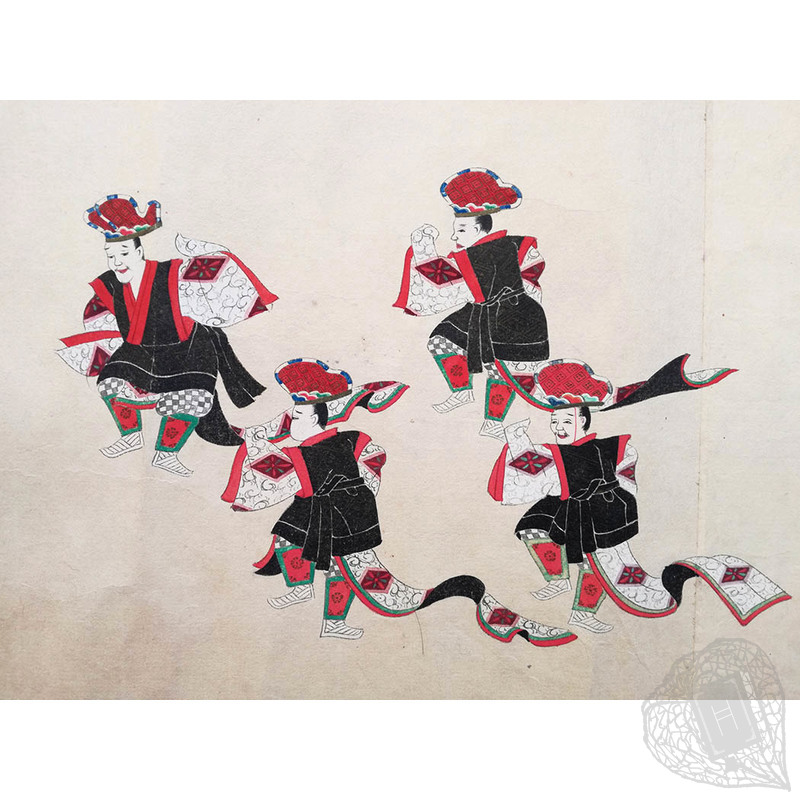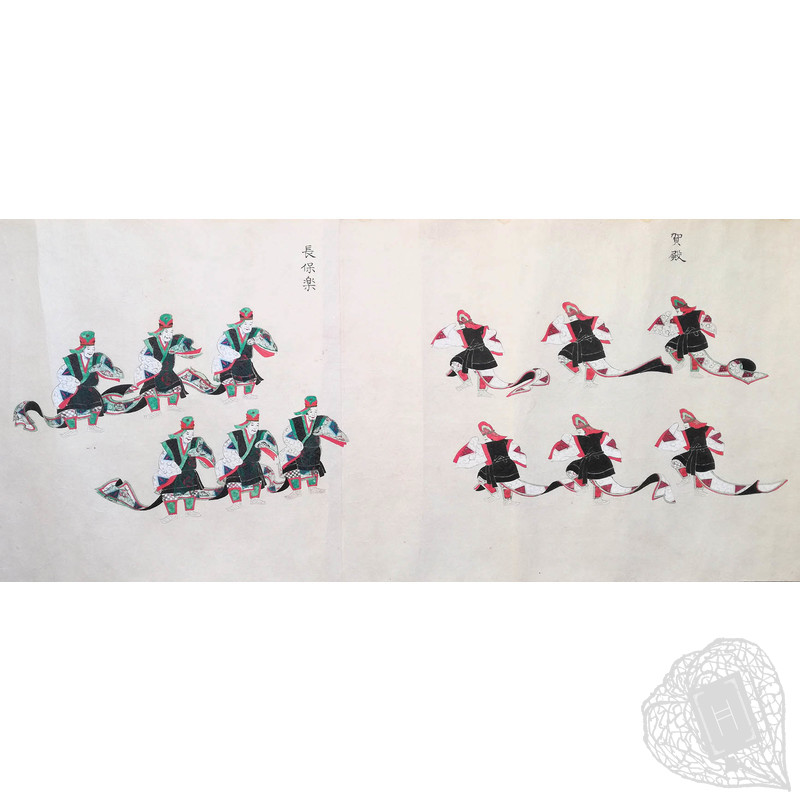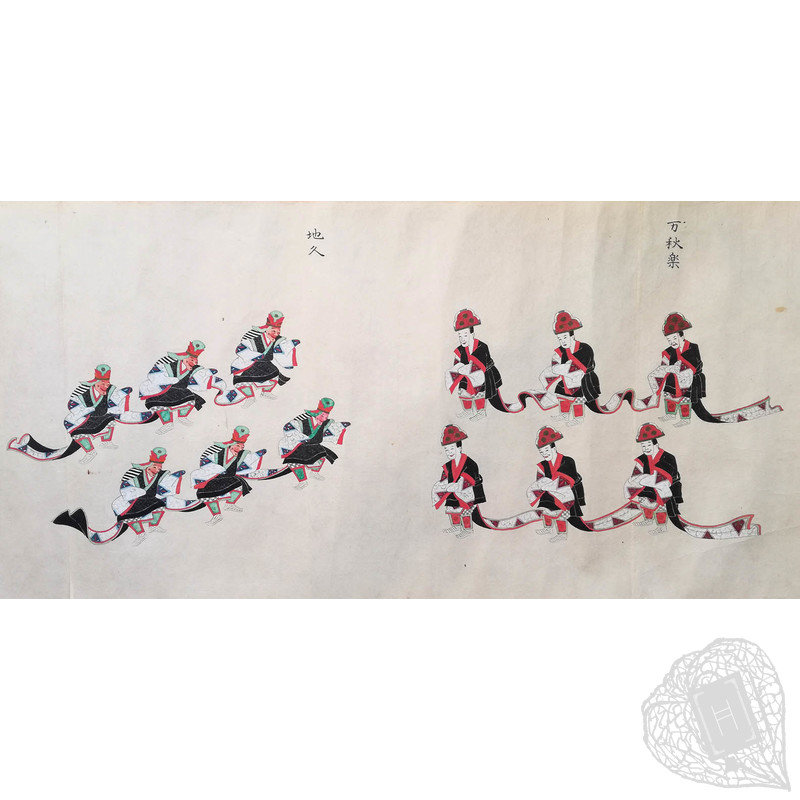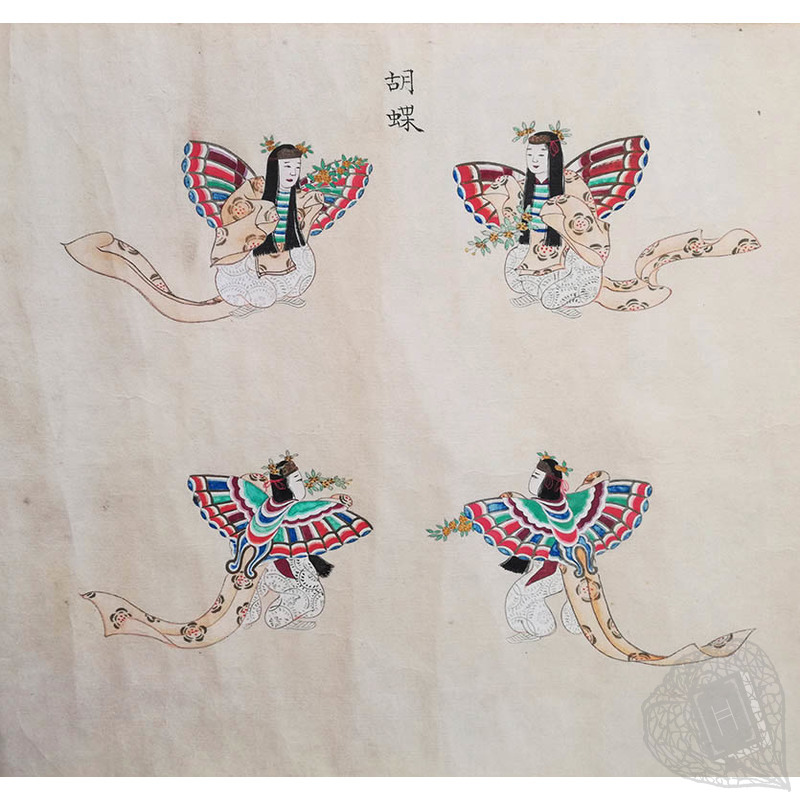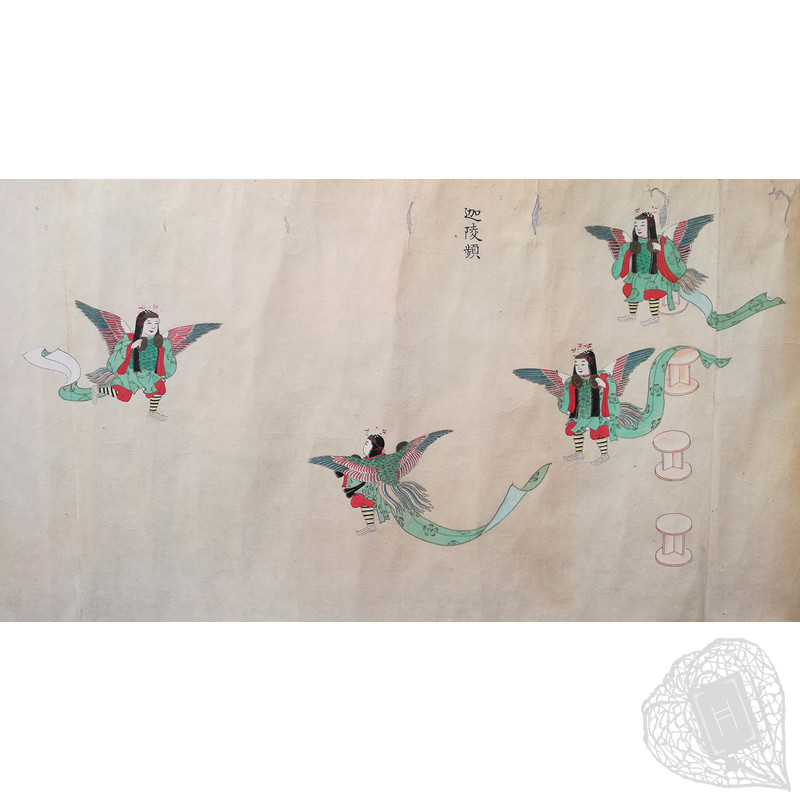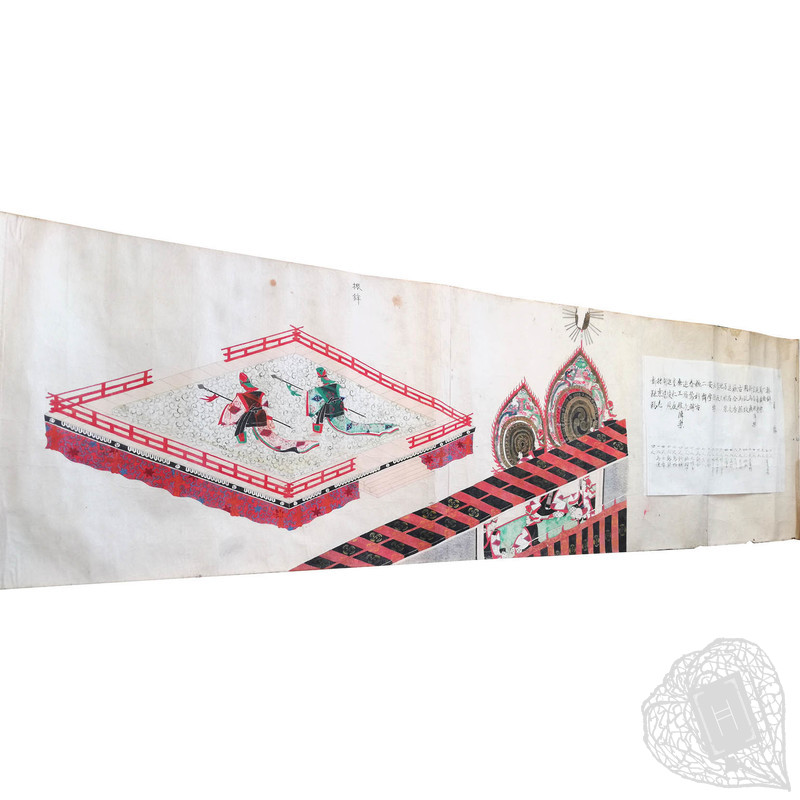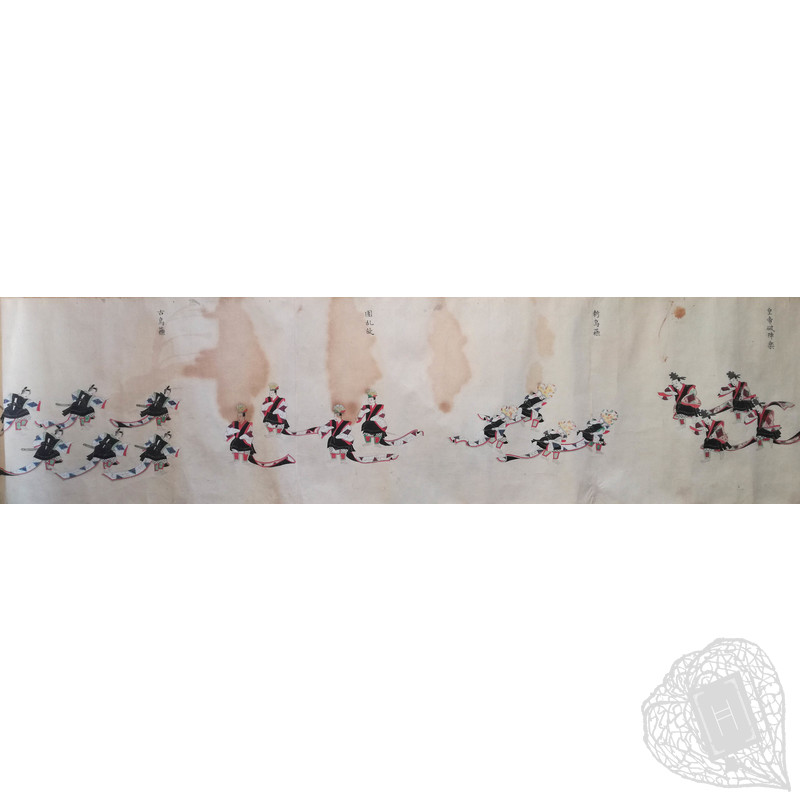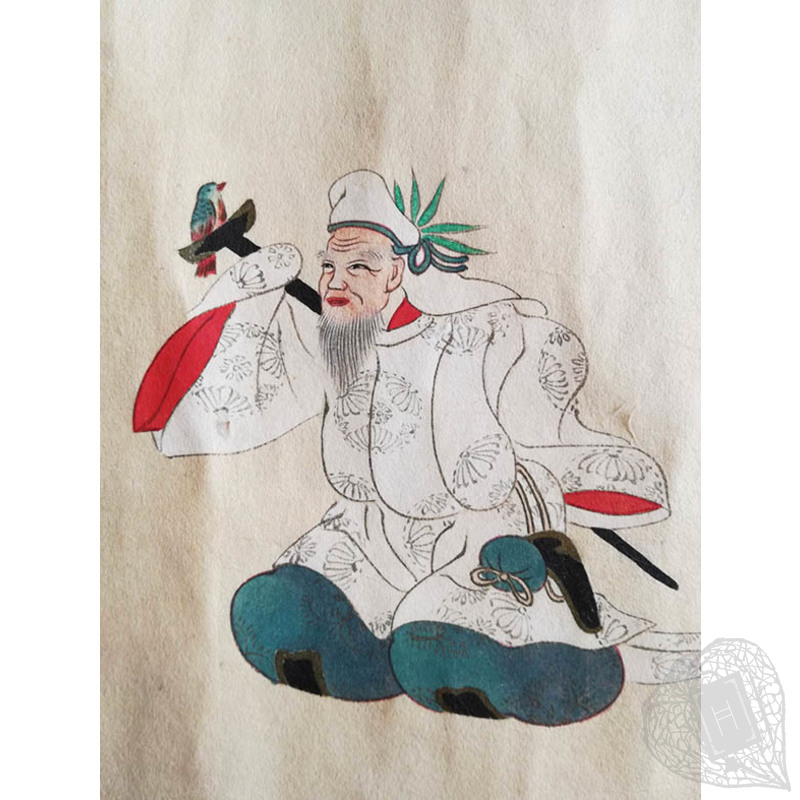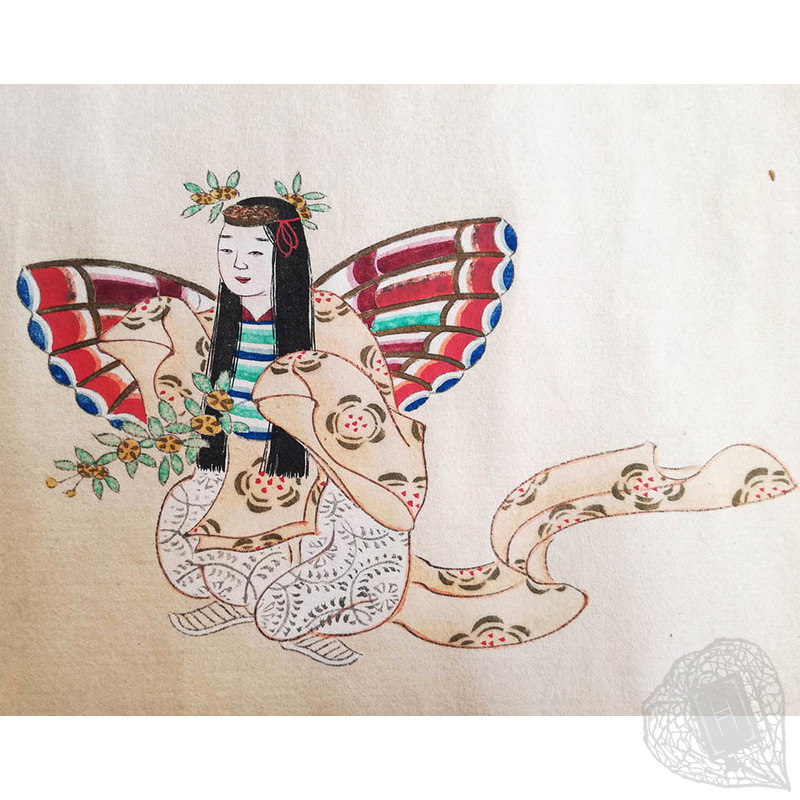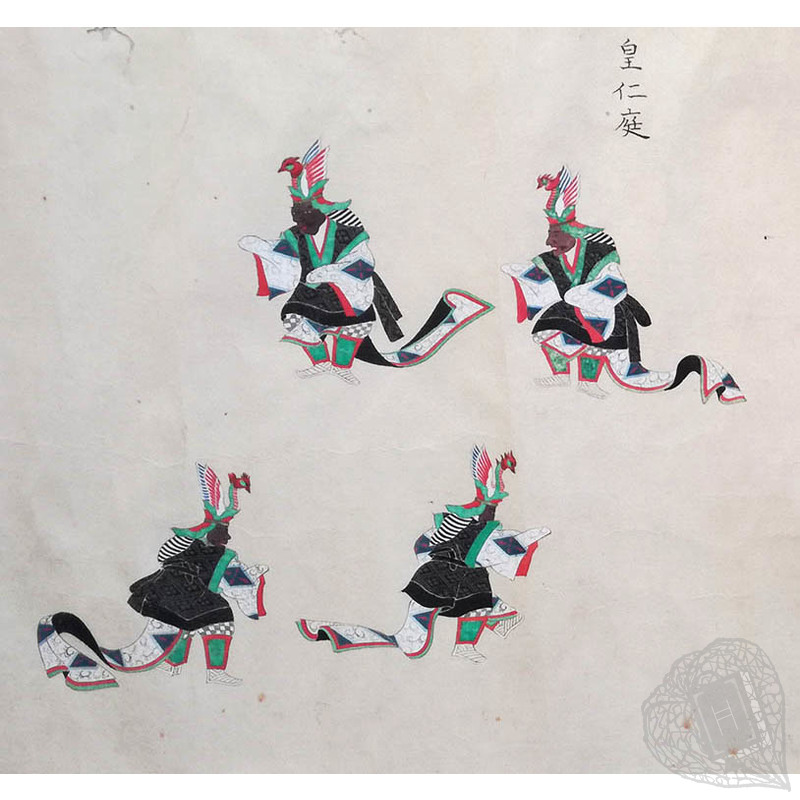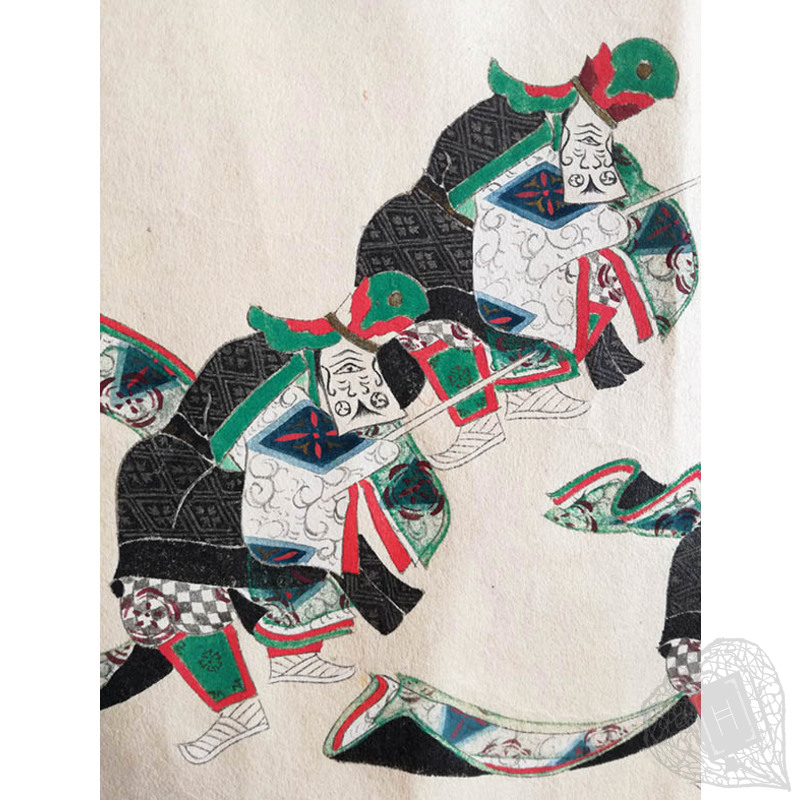Classic Illustrated Books Modern Art and Design Books Translations of Western Texts Japanese Literature Prints and Ephemera Western Books Photo Books Paintings & Scrolls Australia & New Zealand Others
Australia New Zealand Antarctica Japan Korea China Other
Edo Period [1603-1853] Bakumatsu Period [1853-1868] Meiji Period [1868-1912] Taishō Period [1912-1926] Shōwa Period [1926-1989]
Share this book on...

Bugaku Zukan
| US$3,945.00 |  ENQUIRE ENQUIRE |
 BUY BUY |
[Ca. late Edo period (early to mid-1800s)]. Manuscript.
“Alongside the closely-allied music practice of gagaku, the establishment of the bugaku tradition during the Nara (710-794) and Heian (794-1185) periods reflected a growing interest in cultural and religious practices outside Japan and became part of the Japanese imperial court's broadening sense of intercultural exchange and political prominence. Cultivated as a self-conscious demonstration of the court's cosmopolitanism and refinement, bugaku became a highly stylized dance form, with a slow and measured choreographic style. For much of its history, bugaku remained an exclusive and privileged experience, performed only at the Japanese imperial court and, very rarely, as part of religious rituals at temples or shrines”.
An illustrated scroll featuring 25 delicately hand-painted bugaku dances. Bugaku is an early Japanese performance art which developed from dances from China, Southeast Asia, Korea, and Manchuria, brought to Japan after the introduction of Buddhism. It is sometimes, confusingly, referred to as gagaku, which is also the term given to the court music accompanying bugaku dances. Bugaku dances are split into two styles - “dances of the left” (sahō) and “dances of the right” (uhō). Dances of the left, accompanied by Japanese adaptations of Chinese tōgaku or Southeast Asian rinyūgaku music, are primarily based on Chinese and Southeast Asian dances and feature dancers in red costumes. Dances of the right, accompanied by Japanese adaptations of Korean komagaku or Manchurian bokkaigaku music, are mainly based on Korean and Manchurian dances and feature dancers in green, blue, or sometimes yellow costumes. The two styles of dance are traditionally performed alternately. One group of musicians performs the music for dances of the left, while another performs those for the right. Both “sides” also have their own decorative dadaiko drums. Dadaiko used for dances of the left have red cords and are decorated with a golden sun, flames, and dragons, while dadaiko for dances of the right have green cords and are decorated with a silver moon, flames, and a pair of phoenixes.
This particular scroll opens with a scene featuring two dadaiko drums for dances of the left and four musicians in red costumes accompanying the dancers with their flutes, sho (a free reed instrument), and hand-drums. The next scene shows two dancers on a stage, performing the first of the 25 dances included in the scroll. The dances, in order, are the enbu (2 dancers, one in red and one in green costume), ikkyoku (2 dancers, one in red and one in green), manzairaku (6 dancers, all red), komagaku (6 dancers, all green), ōdaihajinraku (4 dancers, all red), shintoriso (4 dancers, all green), toraden (4 dancers, all red), kotoriso (6 dancers, all green), sokō (6 dancers, all red), shinshōtoku (4 dancers, all green), manjūraku (6 dancers, all red), chikyū (6 dancers, all green), katen (6 dancers, all red), chōbōraku (6 dancers, all green), ama (2 dancers, all red), ninomai (2 dancers, all green), soriko (4 dancers, all green), shunnōden (4 dancers, all red), taishōtoku (4 dancers, all green), jinnōhajinraku (4 dancers, all red), ōnintei (4 dancers, all green), karyōbin (4 dancers, all green), kochō (4 dancers, all yellow), saisōrō (1 dancer, in white), and the shinmaka (4 dancers, all blue and white). The scroll features both dancers with bugakumen masks and dancers without. The dancers’ faces and beautifully colourful costumes have been delicately painted and display the artist's great attention to detail. The illustrations of the karyōbin and the kochō, dances to be performed by children, are particularly charming.
Several similar scrolls of varying length are known to exist in Japanese collections, suggesting the existence of an original, probably Edo period, scroll from which copies were made. While there is staining to three of the dances included in this scroll, the skill and overall attention paid to detail by the artist makes this work a lovely record of a traditional Japanese performing art developed through cross-cultural interaction.
One manuscript scroll featuring 25 dances. It is unclear whether the scroll was originally longer or whether the 25 dances complete this particular scroll (some similar scrolls feature a repertoire of 50 dances, although in general the number of dances included varies from scroll to scroll). Illegible title in manuscript to hyōshi (wrapper). Wrapper fabric mostly worn away. Wear to scroll extremities. Backed with washi, possibly at the time of creation. Manuscript table of contents tipped-in to beginning of scroll. Sizeable chip to gold pigment at the top of the first illustration. Occasional creases. Large stains to three of the illustrated dances. Minor occasional wormholing, mostly repaired. Other small marks and stains to manuscript, otherwise very good. Wooden jiku scroll shaft. Housed in non-original Paulownia wood box. 1 scroll. Approximately 30 x 880 cm. Text in Japanese.
# 0041


• Ask a question about this item >
Classic Illustrated Books Modern Art and Design Books Translations of Western Texts Japanese Literature Prints and Ephemera Western Books Photo Books Paintings & Scrolls Australia & New Zealand Others
Australia New Zealand Antarctica Japan Korea China Other
Edo Period [1603-1853] Bakumatsu Period [1853-1868] Meiji Period [1868-1912] Taishō Period [1912-1926] Shōwa Period [1926-1989]
Share this book on...







